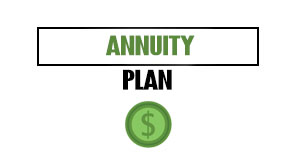Here’s something that might surprise you: getting good investment returns isn’t about being the smartest person in the room or having access to secret information. Some of the best long-term investors use strategies so simple they could fit on a napkin. The trick isn’t complexity — it’s consistency and avoiding the common mistakes that trip up beginners.
Think of investing like planting a garden. You don’t need to be a botanical genius to grow tomatoes. You need good soil, regular watering, plenty of sunlight, and patience. The same principles apply to growing your money – the fundamentals matter more than fancy techniques.
Table of Contents
ToggleWhat Actually Counts as “Good” Returns?
Before diving into strategies, let’s set realistic expectations. The U.S. stock market has historically returned about 10% annually over long periods, but that includes both the great years (like 2013’s 32% gain) and the terrible ones (like 2008’s 37% loss).
Here’s what different return levels mean in practice:
- 3-4% annually: High-yield savings accounts or CDs – safe but barely beat inflation
- 6-8% annually: Conservative investment portfolios with bonds and dividend stocks
- 8-12% annually: Moderate portfolios with broad market index funds
- 12%+ annually: Aggressive portfolios or individual stock picking (with higher risk)
As a beginner, consistently earning 8-10% annually would put you ahead of many professional investors. Don’t let social media stories about 50% gains fool you – those are either extremely risky bets or lucky timing that’s impossible to repeat consistently.
The Foundation: Index Funds Are Your Best Friend
If you only learn one investment strategy, make it this: buy low-cost index funds and hold them for decades. It sounds boring because it is boring. And that’s precisely why it works.
An index fund owns tiny pieces of hundreds or thousands of companies. When you buy shares of an S&P 500 index fund, you’re essentially buying a slice of Apple, Microsoft, Google, Amazon, and 496 other large U.S. companies all at once.
Why index funds work so well for beginners:
- Instant diversification: You’re not betting on one company’s success
- Low fees: Most charge 0.03% to 0.20% annually
- No stock picking required: The fund automatically includes the best-performing companies
- Professional management: Without paying professional management fees
- Historical performance: The S&P 500 has never lost money over any 20-year period
The Simple Three-Fund Portfolio
Want a complete investment strategy that takes five minutes to set up? Here’s what many experienced investors actually use:
60% Total Stock Market Index Fund: This gives you ownership in virtually every publicly traded U.S. company. When the American economy grows, you grow with it.
30% International Stock Index Fund: This provides exposure to companies outside the U.S. – think Nestlé, Samsung, and ASML. It helps when U.S. markets struggle but international markets perform well.
10% Bond Index Fund: Bonds are loans to governments and corporations. They’re less exciting than stocks but provide stability and income. As you get older, increase this percentage.
That’s it. Three funds, and you own pieces of thousands of companies across the globe. You can adjust the percentages based on your risk tolerance, but this basic framework has created more millionaires than any complex strategy.
Dollar-Cost Averaging: Your Secret Weapon
Here’s a strategy that removes the pressure of trying to time the market perfectly: dollar-cost averaging. Instead of investing a lump sum all at once, you invest the same amount regularly – maybe $500 every month.
Why this works:
- When prices are high, your $500 buys fewer shares
- When prices are low, your $500 buys more shares
- Over time, you end up with a good average price
- You don’t have to worry about market timing
- It builds the habit of consistent investing
Let’s say you invest $500 monthly in an index fund. Some months the fund costs $50 per share (you buy 10 shares), other months it costs $40 per share (you buy 12.5 shares). Over time, you accumulate shares at various prices, which typically works out better than trying to guess the perfect time to invest.
The Power of Reinvesting Dividends
Many stocks and funds pay dividends – basically small cash payments to shareholders. Instead of taking this cash, reinvest it to buy more shares. This might seem like a small detail, but it’s huge over time.
Here’s why: if you receive $100 in dividends and reinvest it, you now own more shares. Those additional shares generate more dividends, which you reinvest to buy even more shares. It’s like compound interest on steroids.
Most brokerages offer automatic dividend reinvestment for free. Turn this on and forget about it. Over 20-30 years, reinvested dividends often account for 30-40% of your total returns.
Avoiding the Mistakes That Kill Returns
Trying to Time the Market: Beginners often think they can predict when stocks will go up or down. Even professional fund managers struggle with this. Instead of trying to buy low and sell high, focus on buying regularly and holding long-term.
Chasing Last Year’s Winner: That hot stock or fund that gained 80% last year? It’s probably not repeating that performance. By the time you hear about amazing returns, it’s usually too late to participate.
Emotional Decision Making: When the market crashes, your instinct will be to sell everything. When it’s soaring, you’ll want to buy more. This “buy high, sell low” approach destroys returns. Stick to your plan regardless of how you feel.
High Fees: A fund charging 1.5% annually might not sound like much, but it can cost you hundreds of thousands of dollars over a lifetime compared to a fund charging 0.05%. Always check expense ratios before investing.
Over-Diversification: Owning 50 different funds doesn’t make you safer – it makes you confused. Three to five well-chosen index funds provide all the diversification you need.
The Magic of Starting Early
This is where beginners have a huge advantage over older investors: time. Thanks to compound growth, money invested in your 20s and 30s can grow for decades.
Consider two investors:
- Early Emma invests $3,000 annually from age 25 to 35 (total: $30,000), then stops
- Late Larry invests $3,000 annually from age 35 to 65 (total: $90,000)
At 8% annual returns, Early Emma ends up with more money at retirement despite investing one-third as much. That’s the power of starting early, even with small amounts.
Tax-Advantaged Accounts: Your Return Booster
Before investing in regular (taxable) accounts, maximize tax-advantaged accounts like 401(k)s and IRAs. These accounts can significantly boost your effective returns.
401(k) with Company Match: If your employer matches contributions, contribute at least enough to get the full match. This is an immediate 100% return on your money.
Roth IRA Pay taxes now, grow tax-free forever. Perfect for beginners who expect to be in higher tax brackets later.
Traditional IRA: Get a tax deduction now, pay taxes in retirement. Good if you’re in a high tax bracket currently.
Rebalancing: Keeping Your Portfolio on Track
Over time, your portfolio will drift from your target allocation. If stocks perform well, you might end up with 80% stocks instead of your target 70%. Rebalancing means selling some of the overperforming assets and buying more of the underperforming ones.
This feels counterintuitive (selling winners to buy losers), but it forces you to “buy low, sell high” systematically. Rebalance annually or when any asset class drifts more than 5-10% from your target.
How to Actually Get Started
Step 1: Open an Investment Account: Choose a low-cost broker like Fidelity, Vanguard, or Charles Schwab. Look for accounts with no minimum balance and commission-free ETF trading.
Step 2: Start Simple: Begin with a single broad market index fund like VTI (Total Stock Market) or VOO (S&P 500). You can add international and bond funds later.
Step 3: Automate Everything: Set up automatic transfers from your checking account to your investment account. Set up automatic investing so the money gets invested immediately.
Step 4: Ignore the Noise: Financial media makes money from keeping you engaged, not from helping you get good returns. The more you check your accounts and read investment news, the more likely you are to make emotional decisions.
Advanced Strategies for Later
Once you’ve mastered the basics, you might consider:
- Value investing: Buying undervalued individual stocks
- REITs: Real estate investment trusts for property exposure
- International diversification: Emerging markets or specific countries
- Sector funds: Technology, healthcare, or other particular industries
But honestly, these are optional. Many successful investors never move beyond basic index fund portfolios.
Setting Realistic Expectations
Good investment returns don’t happen overnight. Your first year might see gains of 25% or losses of 15% – both are normal. What matters is the long-term trend.
Expect volatility. Expect years when you lose money. Expect to question your strategy during market crashes. This is all part of the process. The investors who get good returns are the ones who stick with their plan through good times and bad.
Your Action Plan
- Open a tax-advantaged account (401k, IRA, or Roth IRA)
- Start with a broad market index fund with low fees
- Set up automatic monthly investments of whatever you can afford
- Turn on dividend reinvestment
- Ignore your account balance for at least six months while you build the habit
- Increase contributions whenever you get raise
- Stay consistent for decades
The Bottom Line
Getting good investment returns as a beginner isn’t about finding secret strategies or beating the market. It’s about participating in the market’s long-term growth through low-cost, diversified investments while avoiding the emotional and costly mistakes that derail most beginners.
The best investment strategy is the one you’ll actually stick with. Start simple, stay consistent, and let time work its magic. Your future self will thank you for beginning today, even if you start small.
Featured Image Credit: Photo by Anna Tarazevich; Pexels















